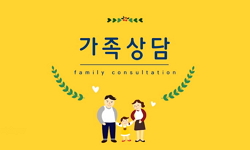한국 한센병 설화에서 여성은 적극적인 치유자의 역할을 담당하고 있지만 가족이라는 장치 안에서 철저히 희생된 존재이기도 했다. 이 설화 속의 가족은 희생적인 열녀를 탄생시키고 가문...
http://chineseinput.net/에서 pinyin(병음)방식으로 중국어를 변환할 수 있습니다.
변환된 중국어를 복사하여 사용하시면 됩니다.
- 中文 을 입력하시려면 zhongwen을 입력하시고 space를누르시면됩니다.
- 北京 을 입력하시려면 beijing을 입력하시고 space를 누르시면 됩니다.

한국 한센병과 가족이라는 장치 = Hansen's Disease in Korea and Family as the Apparatus -Some reviews on the process from traditional tales to modern novels
한글로보기https://www.riss.kr/link?id=A101892438
- 저자
- 발행기관
- 학술지명
- 권호사항
-
발행연도
2014
-
작성언어
-
-
주제어
한센병(나병) ; 한국 한센병 설화와 소설 ; 가족 ; 희생 ; 장치 ; 호모 사케르 ; Hansen's disease ; Korean Hansen's disease tales and novels ; Family ; Sacrifice ; dispositif ; Homo Sacer
-
KDC
300
-
등재정보
KCI등재후보
-
자료형태
학술저널
- 발행기관 URL
-
수록면
57-78(22쪽)
- DOI식별코드
- 제공처
-
0
상세조회 -
0
다운로드
부가정보
국문 초록 (Abstract)
한국 한센병 설화에서 여성은 적극적인 치유자의 역할을 담당하고 있지만 가족이라는 장치 안에서 철저히 희생된 존재이기도 했다. 이 설화 속의 가족은 희생적인 열녀를 탄생시키고 가문을 유지, 보존하기 위해 남성의 건강을 중시하는 장치였던 것이다. 이 설화에서 강조된 여성의 희생과 남성의 건강은 조선시대 가부장제와 짝패 관계에 있었다고 할 수 있다.
전통 시기 설화에서는 여성이 남편의 나병을 치유하기 위해 희생을 했다면 근대 이행기에 출간된 소설 『여선담전』은 평범한 남자가 나병에 걸린 여인에게 선행을 베풀어 신분이 상승하게 된다는 이야기를 담고 있다. 이는 조선 후기 사회의 변동에 따라 나병과 가족의 위상이 변화되고 있는 흔적을 보여준다. 1936년에 출간된 김정한의 단편 「옥심이」에서는 수절, 의리, 열녀로 표상된 나병 설화 속의 여성의 모습을 찾아볼 수 없다. 이 소설에서는 나병에 걸린 남편을 위해 헌신하는 아내를 구시대의 유물로 취급한다.
근대 이후 한센인은 점차 가족이라는 장치의 바깥으로 이동한다. 이제 가족의 자리를 병원과 국가라는 장치가 대신한다. 근대의 병원과 국가는 한센인들의 병을 치유하고 그들의 생명을 보호하기 위해서가 아니라 건강인과 사회, 국가를 보호하기 위해 한센인을 격리하는 정책을 강화했다. 병원과 국가는 "벌거벗은 생명", 즉 한센인들을 체계 안으로 포획하는 폭력적 장치였다. 이 "희생당한 인간"은 식민지 근대의 생명 권력의 체제를 구성하는 토대가 되었다.
생명 권력 장치가 도처에 자리해 있는 우리 사회는 "호모 사케르"를 지속적으로 생산하고 있다. 아감벤이 말했듯이, 우리 모두는 잠재적인 호모 사케르인 것이다. 한국 나병 설화는 호모 사케르가 오늘날 갑자기 출현한 것이 아니라 저 먼 설화의 시대에서부터 이미 존재했음을 보여주는 하나의 사례가 될 수 있다.
다국어 초록 (Multilingual Abstract)
Women in Korean leprosy (Hansen's disease) tales played a role as an active healer, but a complete sacrifice of the apparatus called family. The family in the tales was a apparatus which gave a birth to a sacrificially virtuous woman and valued man's ...
Women in Korean leprosy (Hansen's disease) tales played a role as an active healer, but a complete sacrifice of the apparatus called family. The family in the tales was a apparatus which gave a birth to a sacrificially virtuous woman and valued man's health to keep and preserve the family. The sacrifice of a woman and health of a man emphasized in the tales can be said to be a partner with the patriarchy in the Chosun era.
The woman in the tales sacrificed herself to heal her husband's leprosy, while 『Yeosundam Jeon』, novel published during the period of transition into the modern times shows a common man who got a status upgrade by performing good deeds to a maid leper, which is an evidence of some change in the status of leprosy and family according to the social change during the period of late Chosun. In Kim Jeong-han's short novel, 「Oksimi」 published in 1936, we can never see the one represented as a woman of integrity, fidelity and virtue who was described in existing leprosy tales. The novel treats the wife who dedicated herself to her husband with leprosy like a survival of olden days.
Since modern times, those who have Hansen's disease gradually have been moved out of the family apparatus. And now the apparatus called the hospital and the government is substituted for family. Modern hospitals and the government strengthened the policy which isolated the lepers in order to protect those who are the healthy, the society, and the government, not to treat the Hansen's disease and protect lepers' life. The hospital and governmen were a violent system which captured the "bare life", lepers into their planned apparatus. The "Homo Sacer" came to the basis for the bio-power system in colonial modernity.
Our society surrounded by the bio-power system keeps on producing "Homo Sacer". As Agamben said, all of us are potential Homo Sacer. Korean leprosy tales can be a case which shows Homo Sacer had already existed from the age of the olden tales rather than it appeared accidently in modern times.
목차 (Table of Contents)
- <국문요약>
- Ⅰ. 가족은 왜 나병 설화의 중심에 있는가
- Ⅱ. 희생적 치유 : 효와 열 사이
- Ⅲ. 나환자와 여성의 등가 교환 : '호모 사케르(Homo sacer)'의흔적
- Ⅳ. 남성의 건강과 가문 유지 : 가부장제의 조건
- <국문요약>
- Ⅰ. 가족은 왜 나병 설화의 중심에 있는가
- Ⅱ. 희생적 치유 : 효와 열 사이
- Ⅲ. 나환자와 여성의 등가 교환 : '호모 사케르(Homo sacer)'의흔적
- Ⅳ. 남성의 건강과 가문 유지 : 가부장제의 조건
- Ⅴ. 나오며 : 근대 이후' 가족에서 병원과 국가로
- <참고문헌>
동일학술지(권/호) 다른 논문
-
장애인활동지원서비스 이용자의 자립생활 경험에 관한 현상학적 연구
- 부경대학교 인문사회과학연구소
- 국윤경(Guk Yung yeong)
- 2014
- KCI등재후보
-
- 부경대학교 인문사회과학연구소
- 김선복(Kim Seon bok)
- 2014
- KCI등재후보
-
- 부경대학교 인문사회과학연구소
- 이승선(Lee Seung seon)
- 2014
- KCI등재후보
-
디지털 시대의 네트워크 지식과 지식 생산의 의미에 대한 고찰
- 부경대학교 인문사회과학연구소
- 전경란(Jeon Gyong ran)
- 2014
- KCI등재후보





 KCI
KCI 스콜라
스콜라






